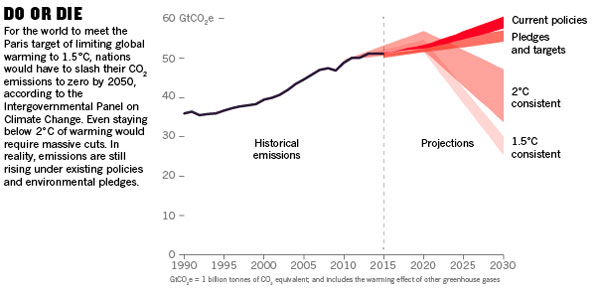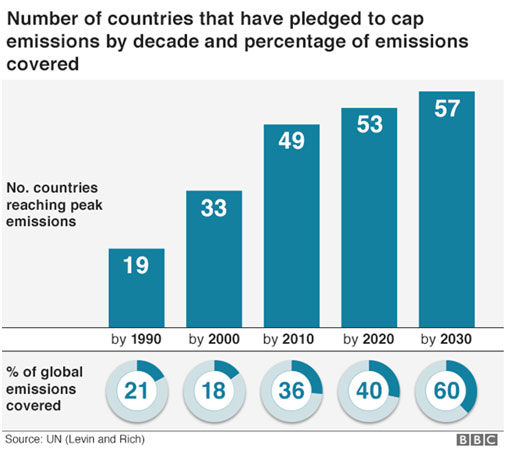In an intriguing move, India has pushed back the deadline for coal-fired power plants to adopt new emission norms by up to three years. The authorities have surprisingly further allowed utilities that miss the new target to continue operating after imposing a penalty, a government notice stated. Initially, India had set a 2017 deadline for thermal power plants to install Flue Gas Desulphurization (FGD) that cut down emissions of sulphur dioxides. However, that was postponed to varying deadlines for different regions, ending in 2022.
The latest, but surprising, order dated April 1 from the environment ministry says plants near populous regions and the capital New Delhi will have to comply by 2022, but utilities in comparatively less polluting areas can stretch up to 2025 to either comply or retire units.

Traditional coal-fired utilities including govt-run NTPC Ltd and other private industry groups representing corporate companies such as Reliance Power and Adani Power have been usually lobbying for long to dilute the pollution standards, citing high compliance costs.
As is the wont, the government memorandum mentions suggestions from the power ministry that plants be given deadlines to adopt norms in line with the severity of pollution in the region where they are located.
As the Indian government works, a high-profile task force will be constituted by the Central Pollution Control Board to categorise plants in three categories “on the basis of their location to comply with the emission norms”, the environment ministry said which will have no deadline for implementation.
In case of non-compliance by any entity, a penalty of up to a mere 0.20 rupees ($0.0027) will be levied for every unit of electricity produced defying the norm.
In an inexplicable statement the power ministry said in January that a “graded action plan” could help avoid immediate increase in power prices in several relatively clean areas of India and avoid unnecessary burden on power utilities and consumers which, of course, never happened.
Most Indian cities have found pride of place in the world’s top 20 most polluted cities.
Thermal power companies, which produce three-fourths of the country’s electricity, account for almost 80 per cent of its industrial emissions of particulate matter, sulphur- and nitrous-oxides, which cause lung diseases, acid rain and smog among other catastrophes.
Under the evolving circumstances, when India’s government last month asked refiners to speed up diversification and reduce dependence on the Middle East – days after OPEC+ said it would continue its production cuts – it conveyed a subtle message about its clout and foreshadowed changes to the global energy maps.
Way back in 2015, Indian oil minister Dharmendra Pradhan had called the nation’s huge oil imports as a weapon of the country. This Indian oil import policy had been in the works for years.
In view of global epidemic scenario, when the Organisation of Oil Exporting Countries and Major Producers (OPEC+) extended the production cuts into April, India brought out that weapon. The government has issued orders that Indian refiners should cut down imports from the Kingdom by about 25 per cent in May, media sources said, shrinking our imports to around 11 million barrels from monthly average of almost 15 million barrels.
The top bureaucrat in the oil ministry, Mr Tarun Kapoor, announced that India was in the process of asking state refiners to jointly negotiate with oil producers to extract advantageous deals, however, he declined to elaborate on plans to cut down Saudi imports.
Kapoor further said that India being one of the largest buyers of oil, it is a powerful player in the world of oil. India’s words are taken seriously among the oil producing nations, so, sellers have to heed of our country’s demand as well to keep the long-term relationship intact,” he said.
In this regard, neither the Saudi state oil company Saudi Aramco nor the Saudi energy ministry declined to comment.
Indian oil minister Dharmendra Pradhan, sees high oil prices as a threat to India’s recovering economy. He said he was saddened by the OPEC+ decision. India’s fuel import bill has ballooned, and fuel prices – added by government taxes imposed last year – have hit unprecedented records.
In a recent report, the International Energy Agency has predicted India’s fuel consumption to double and its oil import bill to almost triple from 2019 levels to more than $250 billion by 2040.
An oil ministry official, who declined to be named, said the OPEC+ restrictions have created uncertainty and made it difficult for refiners to plan for procurement and price risk.
However, on the other hand, it also creates opportunities for companies in the Americas, Africa, Russia and elsewhere to import the shortage.
Incidentally, India is the world’s third-largest consumer of oil and hopes to use that heft of its market to change the terms of engagement with major suppliers. The West Asia supplies around 60 per cent of all oil bought by India while Latin America and Africa are the also other big suppliers.

Lately, India has bought more oil from the US and from other newer sources such as Guyana. Due to its geographical proximity, West Asia can, however, supply cargoes in less time and at lower freight rates.
If India succeeds in his endeavours, it will likely set an example for other countries. As consumers find more affordable choices and renewable energy becomes relatively common, the influence of big producers like Saudi Arabia could possibly wane, altering geopolitics and trade routes.
Currently, India imports 85 per cent of its oil needs and is very often vulnerable to global supply and price shocks. When oil prices started to rise in February, it wanted Saudi Arabia to relax output controls but the Kingdom ignored its calls. This has led to the Indian government now looking for diversification of its supply base.
Artice by —
Arijit Nag is a freelance journalist who writes on various aspects of the economy and current affairs.
Articles of Arijit Nag

